Discover the work of Richard England, the lesser-known postmodernist from Malta
Richard England, arguably Malta's most influential architect, might not be as well-known as others in the postmodernist realm, but he has been prolific, his work inspiring others to this day; we visited a show in Marseille surveying his career

Photographs of pastel-coloured pillars, slabs and arches bathe in marigold light streaming in from the shallow eaves of Le Corbusier's Unité d'Habitation. They show the work of Richard England, the 89-year-old architect, artist and poet from Malta who defined his island-home’s most tenacious spatial experimentation across six decades. Spread over the walls of the Gallery Kolektiv Cité Radieuse on the modernist building’s third floor, the exhibition is, rather remarkably, the architect’s first retrospective outside of Malta.
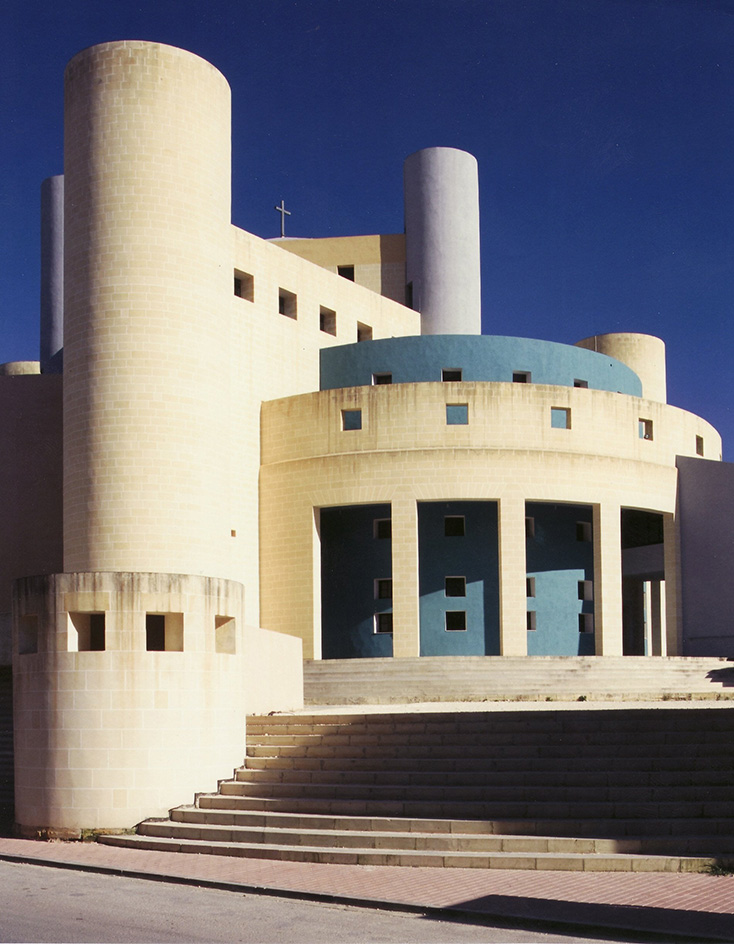
Qawra Church, Malta
Maltese architect Richard England: a brief history
England was born in 1937 with architecture in his home—his father had an established studio and bequeathed him his first commission in 1962: the Church of St Joseph in the island’s northern village of Manikata. Designed when England was only 25, the church became emblematic of Malta’s post-war period, breaking with the islands’ unchallenged pre-modernist loyalty to Renaissance, Baroque and Neo-Gothic ecclesiastical architecture.
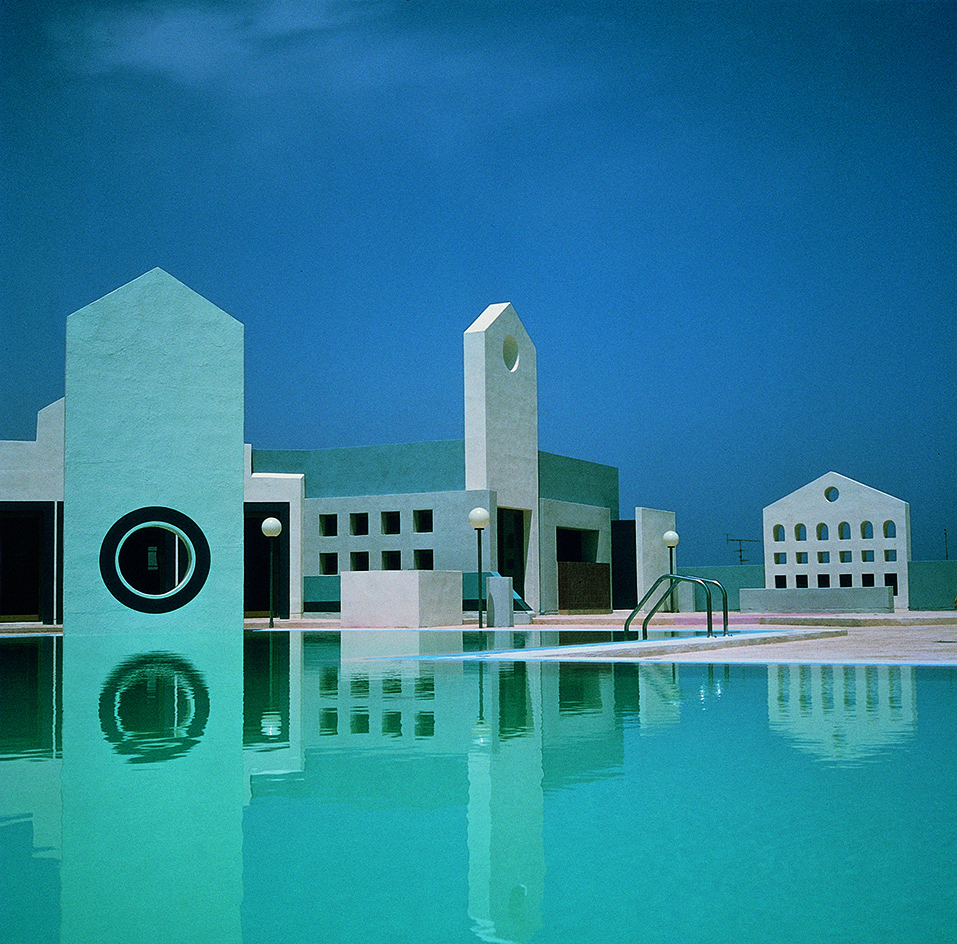
Aquasun Lido, St Julians, Malta
From that project onwards, England built prolifically, moving into tourism and civic sectors and shaping the identity of Malta’s post-war decades. England’s buildings - coloured by the influence of a wide-reaching network of peers and an incorrigible thirst for international ideas - stewarded the island’s journey into a newfound state of independence. By the 1980s, his work was synonymous with what foreign architecture writers termed ‘critical regionalism’, and with what locally formed part of the transdisciplinary zeitgeist of a young Republic.
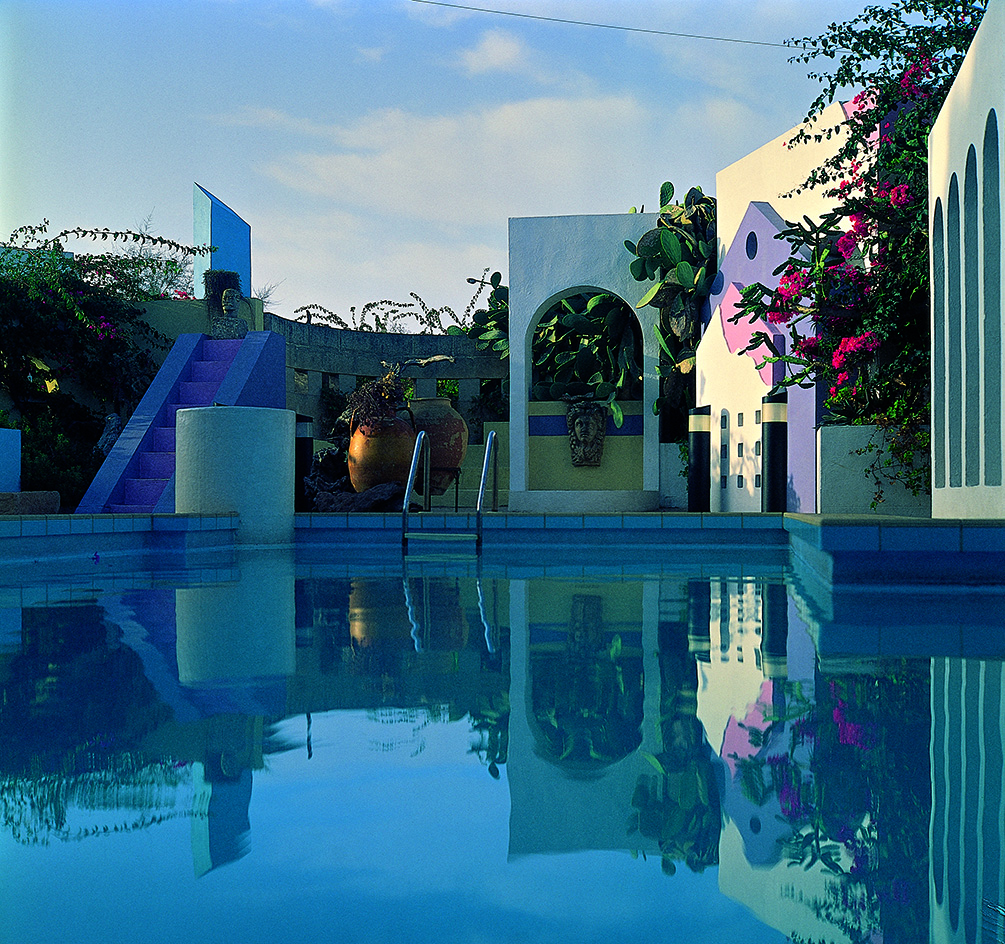
A Garden for Myriam, St Julians, Malta
England was exported early in his studies to intern in the studio of Gio Ponti - the Italian architect, industrial designer and writer who helped father Italy’s modern movement from the 1920s onwards. He spent five months working on Ponti’s Church of San Carlo Borromeo, inheriting an obsession with phenomenology, the strand of architecture theory centred on the physical experience of buildings. It was buttressed eventually by lifelong citations of Finnish architect Juhani Pallasmaa’s thesis on architectural embodiment and total sensorial impact.
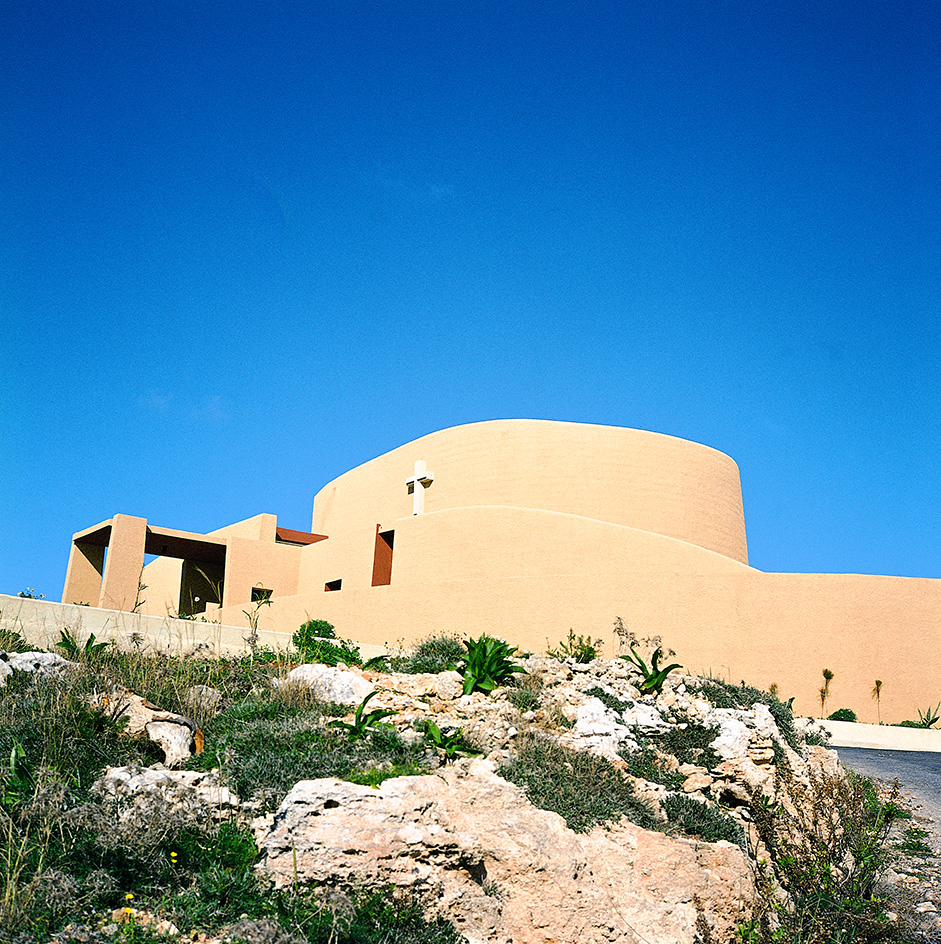
Manikata Church, Malta
Pallasmaa’s words appear in textual vignettes throughout the current exhibition in Marseilles, alongside quotes from figures such as the Swiss humanist architect Mario Botta and England’s own words—all pointing to a philosophy of synthesis, where architecture becomes an incubator for the intangible, or what England identifies as ‘the soul’.
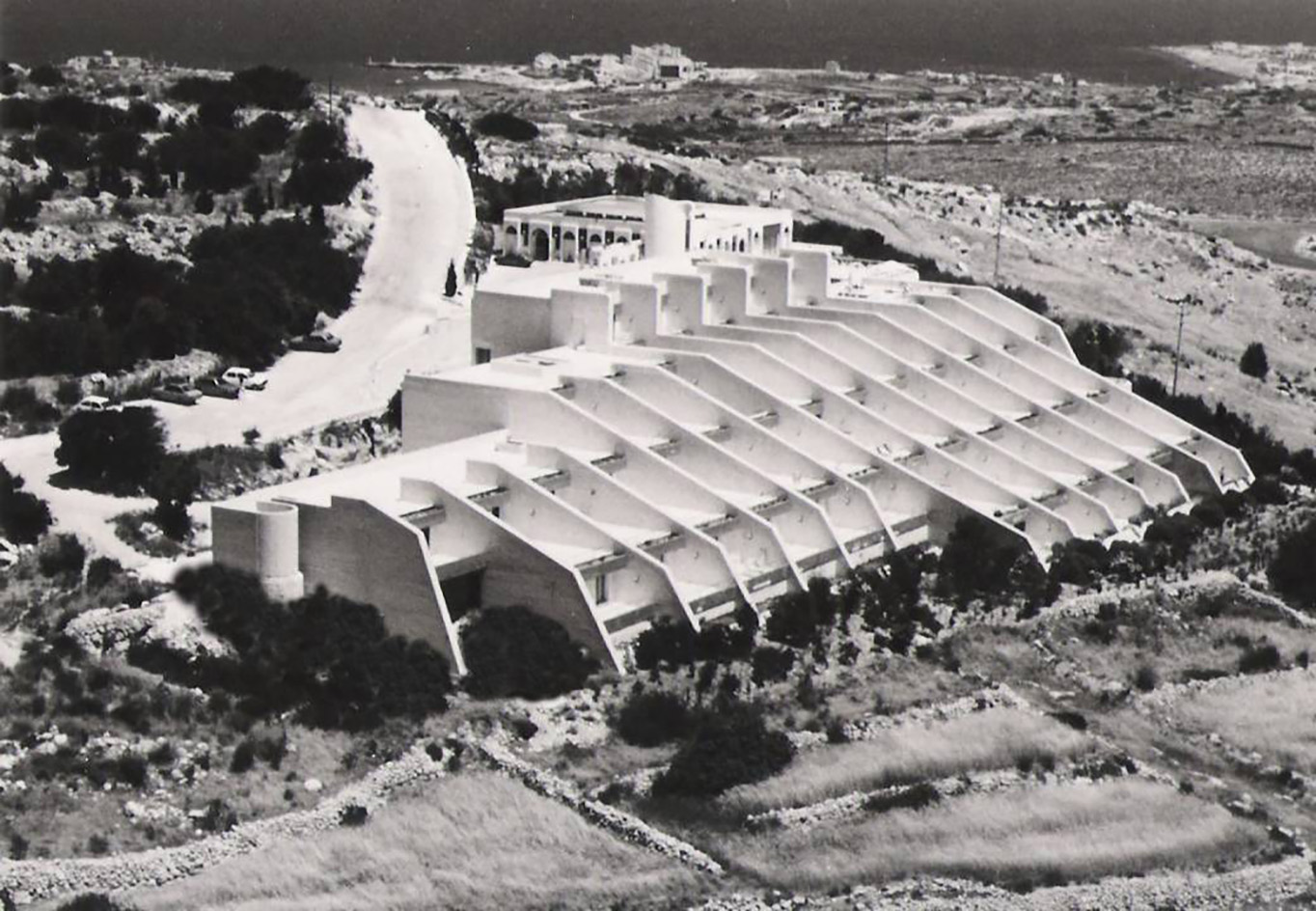
Festeval
'Looking for Richard', the architect's Marseille retrospective
Curated by Laura Serra and Maxime Forest, the exhibition expressly focuses on the purity of England’s virgin designs - shown in original sketches sourced from collections in Malta and the architect’s own expansive archive. In doing so, the show comments on England’s standing in his native home, where the legacy of his built projects has been visibly eroded - his buildings pervasively demolished or edited beyond recognition over time.
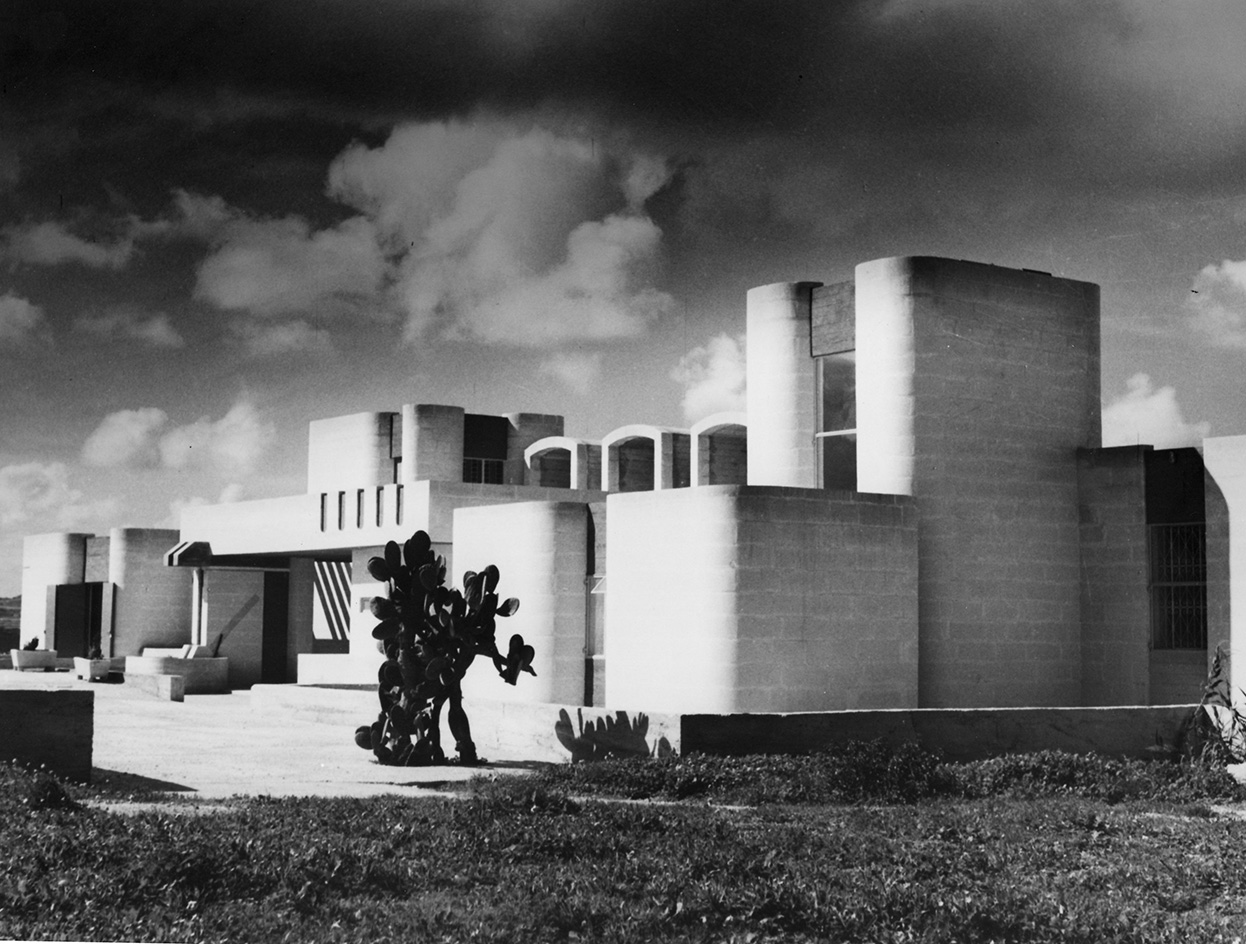
Villa La Maltija, Malta
Within a palette of pale oranges, pinks and aquamarines, paired with deeply stained lines of zealous ink drawings, a route to England’s vision of a nation is traced within the walls designed by one of his own heroes - Le Corbusier. In both cases, the architects expounded ideas of living across a full spectrum of creative output - writing, designing, building, speaking - profoundly influencing and giving shape to a time and place every time.
Receive our daily digest of inspiration, escapism and design stories from around the world direct to your inbox.

Razzett ta' Sandrina, Mgarr, Malta
Ann Dingli is an architecture writer, curator and lecturer living and working in London. Her writing focuses on the impact of built production and heritage on wider permeations of identity and cultural ownership.
-
 A tale of two Audis: the A5 saloon goes up against the A6 Avant e-tron
A tale of two Audis: the A5 saloon goes up against the A6 Avant e-tronIs the sun setting on Audi’s ICE era, or does the company’s e-tron technology still need to improve?
-
 Inside Christian de Portzamparc’s showstopping House of Dior Beijing: ‘sculptural, structural, alive’
Inside Christian de Portzamparc’s showstopping House of Dior Beijing: ‘sculptural, structural, alive’Daven Wu travels to Beijing to discover Dior’s dramatic new store, a vast temple to fashion that translates haute couture into architectural form
-
 A music player for the mindful, Sleevenote shuns streaming in favour of focused listening
A music player for the mindful, Sleevenote shuns streaming in favour of focused listeningDevised by musician Tom Vek, Sleevenote is a new music player that places artist intent and the lost art of record collecting at the forefront of the experience
